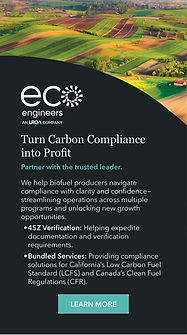CoverCress, Salk Institute collaborate on cover crop carbon sequestration
- The Donald Danforth Plant Science Center
- Oct 21, 2020
- 3 min read
CoverCress Inc. announced a new collaboration with the Salk Institute to improve plant yield, soil health and soil organic carbon storage in cover crops via cutting-edge technologies developed by the Salk's Harnessing Plants Initiative.

HPI is an innovative, scalable and bold approach to address climate change by turbocharging plants' ability to capture and store larger amounts of carbon from the atmosphere in their roots and keeping it buried in the ground for long periods of time. Salk researchers aim to develop these Salk Ideal Plants to mitigate the disastrous effects of climate change by drawing down significant amounts of the excess carbon in our atmosphere while also providing more food, fuel and fiber for a growing population. The HPI initiative received funding of more than $35 million from more than 10 individuals and organizations through The Audacious Project, a highly competitive program housed at TED in 2019.
"Genes identified by HPI for increased root mass and carbon storage have shown promise in Arabidopsis, a common lab species and a close relative of the native species of pennycress," said Joanne Chory, a Salk professor and co-director of HPI and Howard Hughes Medical Institute investigator.
CoverCress is developing a new cash crop for the Midwest developed from the native species of pennycress, branded CoverCress, that will enable farmers to grow an extra crop over the winter between corn and soybeans. Like other cover crops, CoverCress provides farmers the environmental benefits of improved soil health and reduced soil erosion. However, unlike other cover crops, CoverCress also provides farmers economic benefits associated with earning a return by harvesting and selling CoverCress grain as well as the potential to participate in the new soil carbon markets that are developing. The inclusion of HPI genes in CoverCress seed is expected to significantly boost the potential carbon sequestration of this new cash crop from the estimated 1 ton per acre that already occurs.
"Farmers are just nearing the time when they can participate in economic solutions to the changing climate," said Tim Ulmasov, CoverCress chief technology officer, who developed the collaboration with the Salk Institute. "We are very happy and proud that Salk has chosen us for this important scientific collaboration and are optimistic it will result in a valuable proof of concept."
Professor Wolfgang Busch, who is co-director of HPI, added, "This collaboration is an important step in leveraging a close relative of our model plant to not only test but also to employ our genetic solutions for crop-based carbon sequestration. This promises to help agriculture pull more carbon from the atmosphere and store it for longer in the soil."
CoverCress has been developing its new crop since its founding in 2013 with the collection of more than 800 unique native pennycress plants.
"Our breeding and gene editing work, in collaboration with several leading Midwest universities, has put us in position to plant our first commercial crop next fall," said Mike DeCamp, CoverCress chief operating officer. To develop this innovative crop, CoverCress from its start has also partnered with Donald Danforth Plant Science Center, a world-leading institution for plant science. CoverCress is using Danforth Center greenhouses to grow the crop and teamed up with several Danforth Center investigators to develop new traits using funding from the Wells Fargo Foundation Innovation Incubator (IN2) jointly administered by the Danforth Center, Wells Fargo and the National Renewable Energy Laboratory.
"The CoverCress grain is a unique feedstock," DeCamp added. The grain has an oil content of nearly 35 percent, and because it is grown over winter during the Midwest's off-season, scavenging nitrogen left over after corn, it produces with a feedstock with very low carbon intensity. "This makes it an ideal feedstock for renewable diesel producers or for businesses seeking sustainable sourcing of feed ingredients," he said.


































